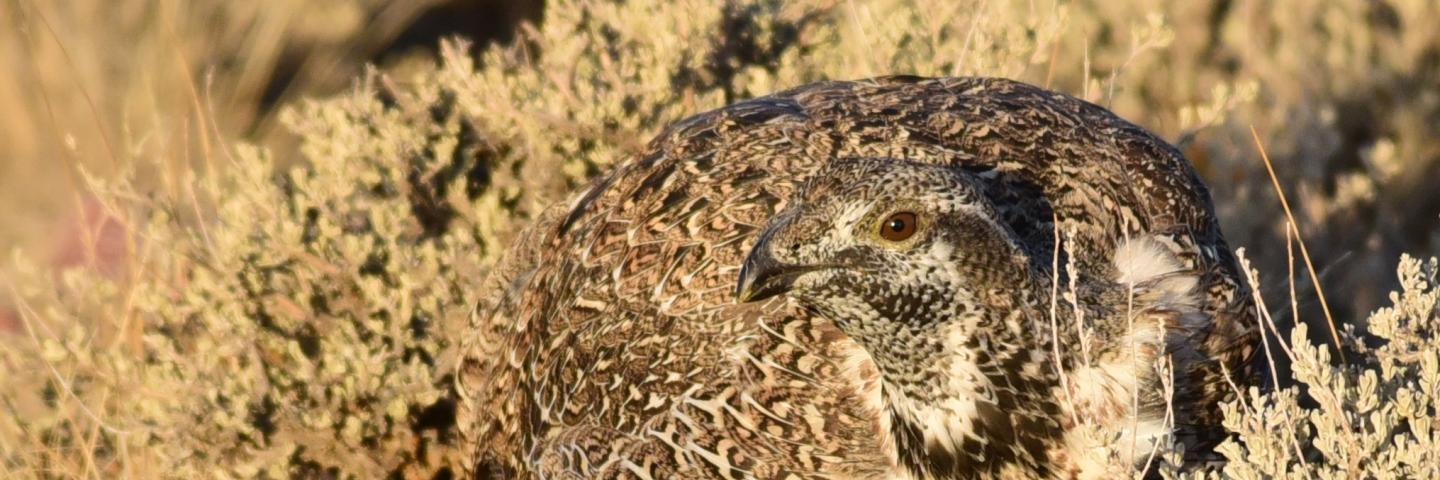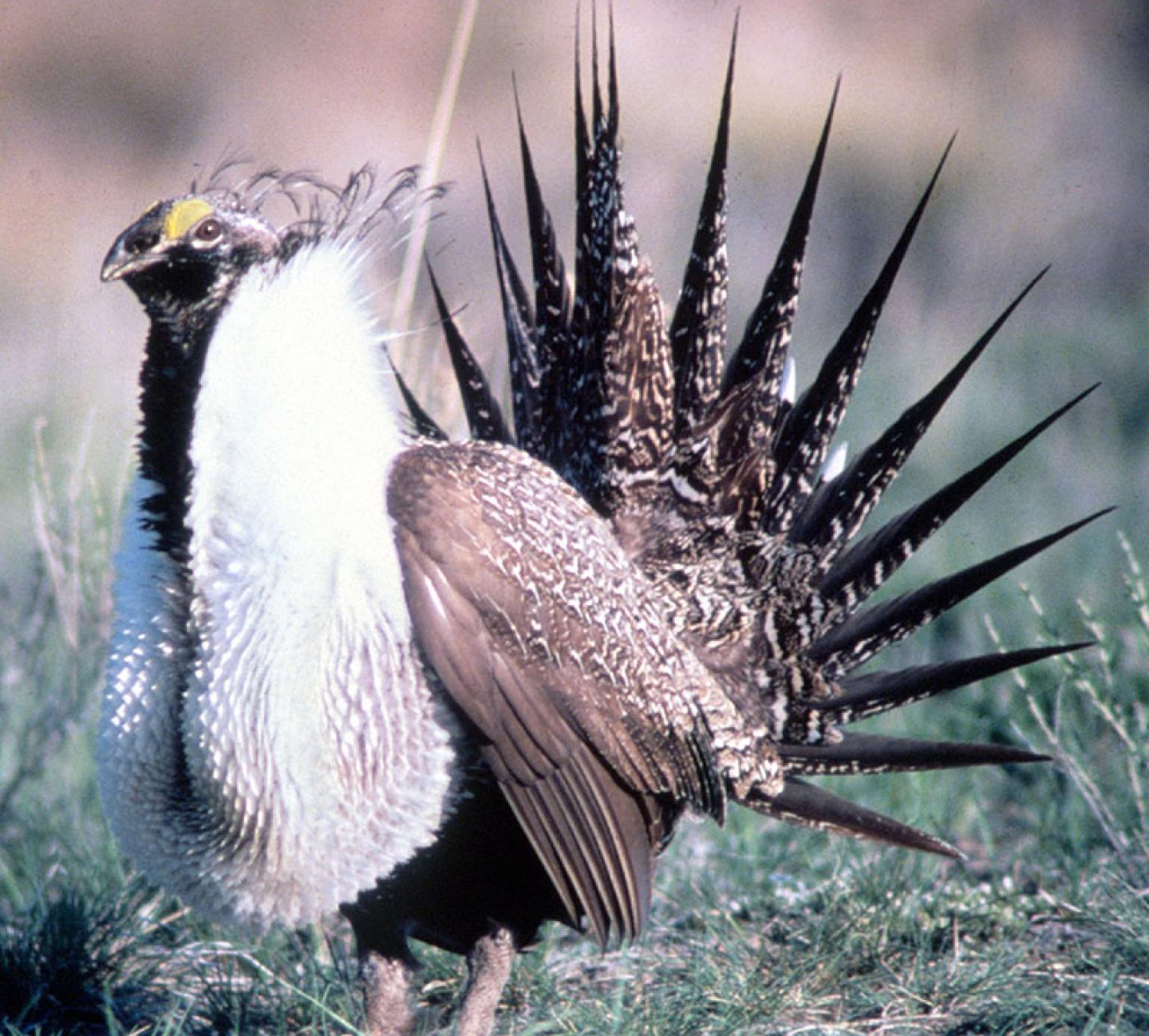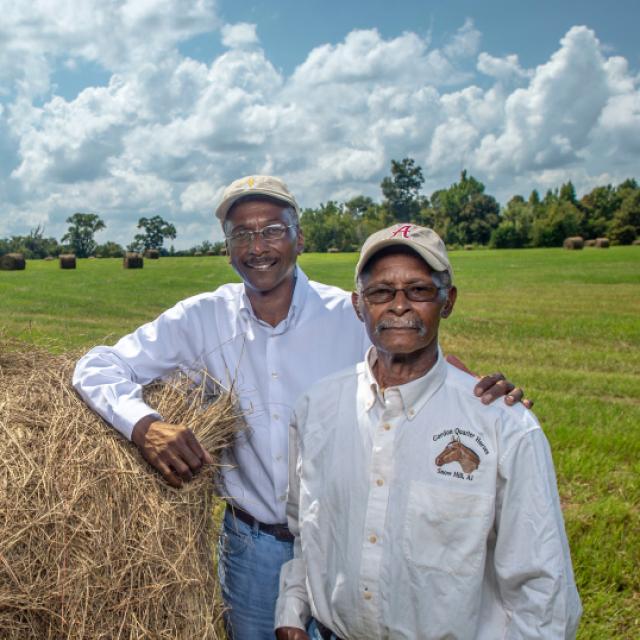Notice


Through SGI, NRCS works with landowners in 11 Western states to improve habitat for sage grouse and improve sustainability and productivity of native rangelands.
FY-25 Ranking Information
As part of a Department-wide effort to support connectivity of wildlife habitat on working landscapes (read the release), NRCS provides technical and financial assistance to participants who voluntarily make improvements to their working lands while the US Fish and Wildlife Service (FWS) provides participants with regulatory predictability for the Endangered Species Act (ESA) when needed. This innovative approach empowers landowners with a means to make on-the-ground improvements and provides peace of mind that no matter the legal status of a species, they can keep their working lands working. The USDA and its federal, state and tribal partners are building off of these voluntary efforts - integrating public land management and locally led conservation to improve terrestrial wildlife habitat connectivity and corridors. Together, these efforts will help address habitat loss, barriers to animal movement and impacts from natural disasters and invasive species.
This model has proven extremely popular with private landowners across the United States. More than 8,400 producers teamed up under WLFW and conserved nearly 12 million acres of wildlife habitat since 2010, an area more than five times the size of Yellowstone National Park. WLFW has helped many species such as the greater sage-grouse in the West and the New England cottontail in the Northeast. For both of these species — in large part because of voluntary conservation efforts on private lands — the FWS determined listing under ESA was not warranted. Beginning in 2017, NRCS expanded this model, which now includes 48 states.
Frameworks for Conservation Action
In 2021-2022, a multi-state, areawide planning team produced the first biome-scale frameworks for wildlife conservation in the Great Plains grasslands, western sagebrush country, and for the Central and Eastern grasslands and savannas within 25 states in the northern bobwhite range.
These frameworks for conservation action capture the science documenting the threats to biomes and the wildlife that are part of them, the conservation actions that NRCS can support to address these threats and benefit producers, and the NRCS goals for implementing these actions over time.
- Great Plains Grasslands Biome Framework
- Sagebrush Biome Framework
- Northern Bobwhite, Grasslands, and Savannas Framework
Conservation Model
The WLFW model builds on lessons learned in conservation over the years and includes:
- Trust and Credibility: NRCS takes a community, grassroots approach to conservation that’s based on the principles of neighborliness.
- Shared Vision: NRCS-recommended conservation practices benefit both wildlife and agriculture. Meet some of the Habitat Heroes who have made wildlife-friendly improvements to working lands across the Country.
- Strategic Approach: NRCS invests resources efficiently, where the biological returns are the highest. See wildlife conservation strategies to learn more about where NRCS is targeting its efforts.
- Accountability: NRCS and conservation partners use science to measure effectiveness of conservation and to quantify outcomes. See Science to Solutions reports for more information on the scientific backbone of WLFW and how species are responding to conservation.
- Leverage: NRCS brings together partners to multiply investments to achieve more conservation.
Regulatory Predictability: Through WLFW, NRCS partners with the U.S. Fish and Wildlife Service to provide regulatory predictability under the Endangered Species Act. Similar to an insurance policy, predictability provides landowners with peace of mind that no matter the legal status of a species, they can keep their working lands working with an NRCS conservation plan in place.
Colorado - SGI
The NRCS accepts applications on an ongoing basis. Colorado landowners and land mangers within Moffat, Delta, Eagle, Garfield, Mesa, Gunnison, Grand, Summit, Rio Blanco, Montrose, Routt, Jackson, Saguache, San Miguel, and Dolores counties are encouraged to visit their local USDA Service Center for more information.
NRCS uses Farm Bill conservation programs, such as the Environmental Quality Incentives Program (EQIP) and Agricultural Conservation Easement Program (ACEP), to provide technical and financial assistance to help ranchers accelerate installation of conservation practices on the ground. Using a voluntary and incentive based approach, NRCS focuses its resources in priority conservation areas and areas with higher bird populations in California, Colorado, Idaho, Montana, Nevada, North Dakota, Oregon, South Dakota, Utah, Washington and Wyoming.
How SGI Works
Conservation practices are designed to be win-win solutions addressing threats facing both sage-grouse and rangelands. This type of conservation work includes:
- teaming up with ranchers to customize a grazing plan that will improve nesting, rearing, and wintering habitats for sage grouse,
- removing encroaching conifers that have invaded sagebrush-steppe,
- installing conservation easement to keep working lands working as intact range,
- enhancing and protecting wet meadows, springs, seeps and riparian areas associated to the sagebrush-steppe, and
- removing, relocating or visually marking fences to reduce sage grouse collisions.
While SGI focuses its work on private lands, home to 40 percent of the birds, NRCS also participates in projects on federal lands where ranchers have leases for grazing. This unparalleled partnership aims for seamless conservation across boundaries.

Greater Sage-grouse are a significant indicator of the health of the sagebrush ecosystem. Over 250 species depend on. this habitat including mule deer, pronghorn, elk and a wide variety of migrant and resident bird species
Ready to get started?
Contact your local service center to start your application.
How to Get Assistance
Do you farm or ranch and want to make improvements to the land that you own or lease?
Natural Resources Conservation Service offers technical and financial assistance to help farmers, ranchers and forest landowners.

To get started with NRCS, we recommend you stop by your local NRCS field office. We’ll discuss your vision for your land.
NRCS provides landowners with free technical assistance, or advice, for their land. Common technical assistance includes: resource assessment, practice design and resource monitoring. Your conservation planner will help you determine if financial assistance is right for you.
We’ll walk you through the application process. To get started on applying for financial assistance, we’ll work with you:
- To fill out an AD 1026, which ensures a conservation plan is in place before lands with highly erodible soils are farmed. It also ensures that identified wetland areas are protected.
- To meet other eligibility certifications.
Once complete, we’ll work with you on the application, or CPA 1200.
Applications for most programs are accepted on a continuous basis, but they’re considered for funding in different ranking periods. Be sure to ask your local NRCS district conservationist about the deadline for the ranking period to ensure you turn in your application in time.
As part of the application process, we’ll check to see if you are eligible. To do this, you’ll need to bring:
- An official tax ID (Social Security number or an employer ID)
- A property deed or lease agreement to show you have control of the property; and
- A farm number.
If you don’t have a farm number, you can get one from USDA’s Farm Service Agency. Typically, the local FSA office is located in the same building as the local NRCS office. You only need a farm number if you’re interested in financial assistance.
NRCS will take a look at the applications and rank them according to local resource concerns, the amount of conservation benefits the work will provide and the needs of applicants. View Application Ranking Dates by State.
If you’re selected, you can choose whether to sign the contract for the work to be done.
Once you sign the contract, you’ll be provided standards and specifications for completing the practice or practices, and then you will have a specified amount of time to implement. Once the work is implemented and inspected, you’ll be paid the rate of compensation for the work if it meets NRCS standards and specifications.

